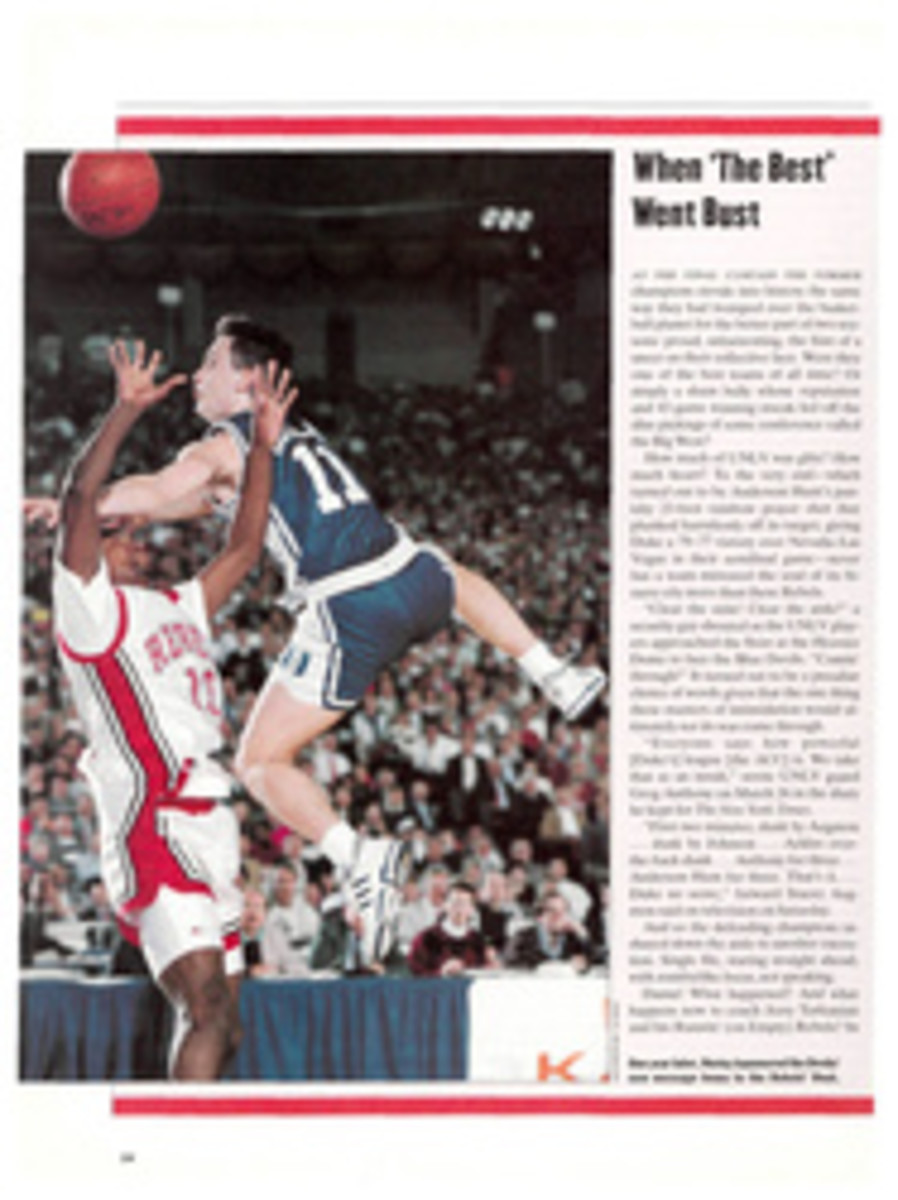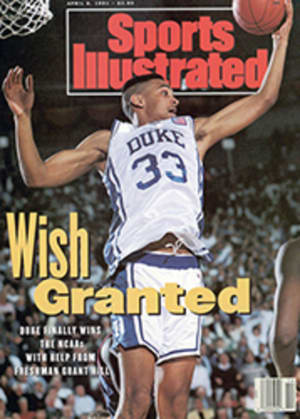
A Kingly Chess Club
As Gary Kasparov and Anatoly Karpov battled through the first 12 games of their world championship chess match last fall at the Hudson Theater in midtown Manhattan, the tension was felt some two miles south in the drawing room of a Greenwich Village brownstone. Members and friends of the Marshall Chess Club sat on the edge of leather sofas and chairs, gazing intently at a large demonstration board while grand masters offered analysis of each move.
The Hudson Theater, which had priced tickets up to $100 a seat, was rarely full during the month of the matches, but the Marshall Club was often packed. Upon arriving in New York, many astute chess fans from all over the country often visited the Marshall's ivy-covered town house, its green-trimmed bay windows overlooking the sidewalk of West 10th Street. The anxious aficionados entered through the stately front doors and made their way to the drawing room, where antique chess tables with intricate wood inlays had been pushed aside to make room for the crowd.
It was natural that chess fans should gather there when not at the theater, because to the cognoscenti, the Marshall is among the most hallowed of chess clubs. In the institution's 76-year history, Kasparov and Karpov are the only world champions who haven't set foot in the Marshall. "And that's only because this is the age of the chess entrepreneur," says the club's former vice-president and treasurer, Matthew Gross. "Kasparov wants $8,000 to make an appearance. We simply can't afford that."
What the Marshall could afford during the match was a computer hookup to the Hudson Theater. As each move was made, the information (Q-d6 and the like) was recorded on a computer and then sent through the phone lines to a receiving computer at the club. The move was then indicated on the big board, and analysis and argument would ensue.
When the two champions left New York for Lyons, France, in November with the score tied at six, the Marshall's electronic link was severed. There was no more instant play-by-play of the championship, although there were still sessions over strategy as Kasparov went on to retain his title, 12½-11½.
The Marshall was founded by Frank J. Marshall, the U.S. chess champion from 1909 until he voluntarily resigned his title in 1936. LIFE magazine once said Frank Marshall looked like a Shakespearean actor, and there's evidence of this on the walls of the club's drawing room. Amid scores of signed photographs of champions are a dozen of Marshall, a strikingly handsome, distinguished man. Born in New York City in 1877, Marshall grew up to be a very affable gentleman both at and away from the board, but his playing style was distinctly aggressive. "As a chess player," he wrote in his 1942 book, My Fifty Years of Chess, "I suppose I am a little like Jack Dempsey as a fighter."
Marshall was one of the game's original five grand masters. The title was conferred upon him and four others—world champ Emanuel Lasker and Dr. Siegbert Tarrasch, both of Germany, and future world champions Josè Raul Capablanca of Cuba and Alexander Alekhine of Russia—by Czar Nicholas II at the St. Petersburg tournament of 1914. Marshall played once for the world title, but was crushed 8-0 by Lasker in 1907.
In 1915, Marshall opened his chess club. It quickly became a principal gathering place for the game's top talent. During the 1920s and '30s, membership was considered a status symbol. The board of governors included George Emlen Roosevelt, Edward Cornell, Gilbert Colgate and Henry Leeds. These leaders of American business and society rubbed elbows with writer Sinclair Lewis, golfer Bobby Jones and a crowd of bohemians that included painter Marcel Duchamp.
World champions Lasker, Capablanca and Alekhine were frequent visitors. Capablanca's favorite chess table, an ornate antique, still occupies a place of honor in the rear drawing room. For a chess lover, playing on "Capa's table" inspires the same reverent thrill that shagging fly balls in Yankee Stadium would evoke in a baseball fan.
The House That Marshall Built was home field for a dynasty of formidable players and championship team members in the 1930s, '40s and '50s. New York's Metropolitan Chess League Championship became an annual subway series between the Marshall and its uptown rival, the Manhattan Chess Club. The interclub rivalry nurtured a generation of American grand masters. Reuben Fine and Samuel Reshevsky played for the Marshall squad. In 1935 and again in '37, with Frank Marshall as captain, the United States entry won the International Chess Olympiad. No American team has done so since.
Although he was a member of the game's elite, Marshall was no elitist. "He made every type of player feel at home in his club," noted The New York Times in its obituary in November 1944. "[Marshall] sat down with a duffer as willingly as with a Class A champion."
According to the tribute in Chess Life & Review magazine, he was "the most beloved of all chess masters."
After Marshall's death, his widow, Caroline, continued to run the club until she died in 1967. Caroline was particularly fond of the younger players, sometimes overlooking the membership dues of those who couldn't afford to pay.
One irascible teenager who played at the Marshall, as well as at the Manhattan and other clubs, during Caroline's reign was Bobby Fischer of Brooklyn. In the late 1950s, he competed regularly in the Marshall's Tuesday night speed-chess tournaments. In '65, when the U.S. State Department refused to issue him a visa to play in Cuba in the Capablanca Memorial tournament, Fischer secluded himself in the Marshall's rear drawing room and set up a board. In something of a precursor of the Kasparov-Karpov computer hookup, Fischer proceeded to compete via teletype. Sitting, appropriately, at Capa's table, he carved out his chess masterpieces under the purview of a single official, and his moves were wired to Havana. He was runner-up in the tournament.
In 1972, when Fischer beat Boris Spassky for the world championship, there was a boom in interest in the game among Americans. The membership roll at the Marshall grew longer. A few years later, however, the eccentric Fischer relinquished his title and vanished, not only from the game but from society at large (SI, July 29, 1985). Interest in U.S. chess diminished, and Marshall Club membership also began to decline. By the early '80s, the club was only an echo of its illustrious past. In his 1984 book Searching for Bobby Fischer, Fred Waitzkin said it had "become badly run-down."
Gross joined the club in 1985, got himself elected an officer and dedicated himself to "the spiritual belief that the club was founded for the perpetuation of chess in New York City." Spirituality is nice, but sometimes elbow grease is needed, too. Gross, along with former club president Marianna Riordan Bellizzi and board member James Glass, put in countless hours restoring the club's once luxurious interior. They began running tournaments every night of the week, for all levels of players. From time to time they even used a typical '80s tactic, direct mail campaigns, to attract new players. The result was that membership tripled to 320, making Marshall the largest chess club in New York. "I think what we've done at the Marshall," says Gross, "is to market the club well."
It's fitting that the venerable Marshall Club is back on its feet. Furthermore, it's good for chess. The newly energized membership is busily documenting priceless chess artifacts long buried in the club's archives. There are new programs for youngsters, and whether or not another Fischer is found is beside the point. "Despite the big events," says Gross, "the future of chess in America will be won or lost on the club level." And the Marshall is once again helping to set the standard for that level. "Wherever I play around the country, everyone knows the Marshall," says Gross. "People want their chess clubs to be like the Marshall."
Kasparov and Karpov don't know what they've missed.
PHOTO
COURTESY MARSHALL CHESS CLUB
Alekhine took on all comers at the Marshall in 1923. He was world champ four years later.
PHOTO
COURTESY MARSHALL CHESS CLUB
Club founder Frank Marshall (right) was lord of the New York boards for three decades.
PHOTO
AP/WIDE WORLD PHOTOS
Fischer honed his moves at the club.
Robert Horn lives in Greenwich Village, where he plays chess recreationally.

